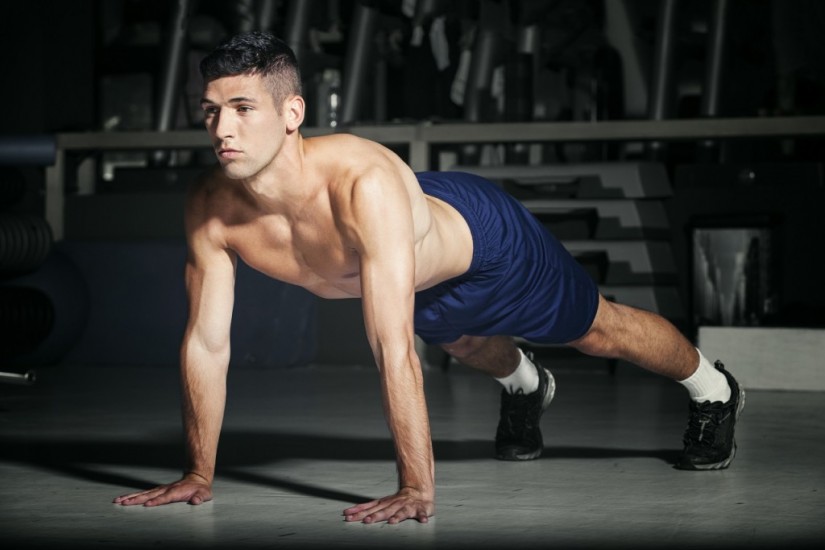Cardiovascular exercise is an extremely important aspect of a healthy lifestyle. For those that are on a mission to lose fat it can drastically increase your fatloss. The most effective cardio for fat loss not only has the capability to burn a substantial amount of calories, but if completed effectively, it can turn one’s body into a fat torching machine. Following we’ll talk about the pros and negative aspects of various types of cardio workouts and then we’ll tell you the way to combine them to make the best cardio for fat loss.
Distance cardio for losing weight
We need to talk about distance running foremost as it is often the default cardiovascular exercise that people use to lose weight. You can find a number of factors why it is so well known. First off, virtually anybody can do it. All you need to do is get a pair of good jogging sneakers and hit the pavement (or treadmill ). In addition, distance jogging can melt away a significant quantity of calories when used frequently.
The shortcomings to distance running for weight loss
There are actually two main factors why distance running just isn’t the most beneficial cardio for fat loss. The main reason is that doing lengthy bouts of distance jogging can cause your body to start craving carbs. Distance running will significantly wipe out a person’s body of glycogen. When this happens, you brain signals that you have to rebuild your glycogen by consuming a lot more carbs. This is troublesome in that consuming a massive dish of noodles can more or less eliminate any caloric deficit you were trying to generate by jogging to begin with.
The second rationale why long distance jogging may not be the top cardio for weight loss is that it can do some severe harm to your joints. Pretty much each long distance runner I know was out of commission for weeks at a stretch due to knee, ankle, or hip pain, and when these injuries occur, there is hardly anything you can do but sit until the pain heal. Obviously, injuries are not great for fat loss or cardio workouts.
High Intensity Interval Training
High intensity interval training (HIIT) has increased in popularity considerably during the last decade for many reasons. HIIT workouts are excellent at switching on your fat burners, they take much less time than distance running, they do not trigger hunger cravings, plus they result in considerably fewer injuries. HIIT is also considerably more varied than long distance running as there are dozens of unique ways to HIIT, but really about only two ways to carry out long distance jogging, outside or with a treadmill.
HIIT means performing brief bursts of strenuous activity combined with a duration of rest prior to repeating the rigorous exercise.
Let’s have a look at sprints to give an example of what a HIIT interval is like. A high intensity sprint interval would be like this:
Interval: Sprint for fifteen seconds
Active rest: Walk for 60 seconds
Repeat as required.
HIIT Workout Variables
One of the best components of HIIT is it may be modified to suit your needs based on your level of fitness or the kind of exercise you might be doing. As an example, if you’re a novice then you may want to shorten the length of the intensive interval, or you might extend the rest period. The above example utilizes a 1:4 ratio indicating the active rest period is 4x longer in comparison to the interval. You could modify that ratio to be 1:3, 1:2, or 1:1.
Altering the aspects in the training session will alter how your body reacts to the training. Reduced intervals with longer rest periods will permit you to be far more intense as you may exert greater effort all through the interval. Greater intensity is good for launching HGH into your circulatory system. HGH is a hormone that tells the body to discharge stored fat cells to be utilized as energy, an crucial component of using cadio for fat loss.
Lengthier intervals make it a lot more challenging to sustain high intensity, but they will also burn a lot more calories in the course of the workout. Should you use longer intervals, then it’s recommended that you utilize a ratio of 1:2 or 1:1 to prevent over training and make sure that you allow yourself sufficient time to recover to maintain the exercise intensity.
Body Weight Cardio Workout
Body weight workout is a unique kind of cardio that mixes six to eight diverse bodyweight exercises into a circuit that is then repeated a couple of times. This kind of training has many of the same positive aspects as HIIT with the difference that a number of body weight sessions need a minimal amount of equipment, such as a pull up bar or stability ball. It’s also different because it utilizes resistance training as a component of the cardio workout.
The idea behind a body weight cardio workout is to go from one exercise immediately to the next with no rest. Then, once you have finished the complete circuit, rest for a minute and repeat the whole circuit once again. The circuit is usually completed up to three times. A circuit might incorporate exercises like lunges, push-ups, squats, etc.
Contrasting HIIIT and Body Weight Sessions
Body weight workouts result in an intense training session that releases HGH and burns a significant quantity of calories, but they’re distinct from HIIT workout sessions in some crucial ways. Body weight sessions present a complete body workout while HIIT is focused on only 1 exercise. There’s also a distinction in intensity. Body weight sessions are generally developed to alternate between pushing and pulling actions of various muscles to ensure that you are able to maintain some intensity all through the circuit but your intensity will diminish substantially throughout the routine. This is since bodyweight circuits only allow for very few extremely brief rest periods.
The best Cardio for Fat burning
The best cardio for fat loss would be to develop a routine that will implement all three varieties of cardio explained above. Here is specifically how this can be done.
Exercise routine 1: Mix HIIT with Distance Running
Maximize your fat loss by pairing HIIT with long distance running. Commence off by finishing a 15 minute HIIT routine. Then go for a nice slow jog for twenty – thirty minutes dependent upon your fitness level. In this way the HIIT increases the HGH in your body which results in more fat cells introduced into your system. Then you eliminate that fat by doing a long jog.
Soon after the workout, make an effort to steer clear of a meal heavy in carbs. Stay away from pasta and rice. This will keep your insulin levels decreased which will enable you to burn off fat for hours after your exercise session.
Training session 2: Body weight cardio circuit
Body weight workouts will add on resistance training to your cardiovascular fat burning plan. This is fantastic in that it will assist you to produce a nice tier of muscle under your unwanted fat merely ready to be shown to the planet.




